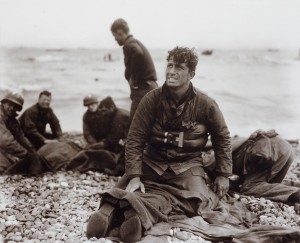The Radical Camera, The Radical Eye
For the League members who documented the home front, the sense of purpose and energy was palpable. This was particularly true among women photographers who were mobilizing for the war effort and joining the League in ever greater numbers. Many of them were instrumental in creating Photo Notes, the League newsletter. And with a new information age dawning in the pages of magazines like Look, they could offer stark visual confirmation of human suffering to sway public opinion. Quoted in the exhibit’s handsome hardbound publication from the Yale University Press, in association with the museum, critic Elizabeth McCausland insisted: “We have all had a surfeit of ‘pretty’ pictures.’ It is life that is exciting and important and life whole and unretouched.”
But the kinetic energy and positivism of the League’s Camera Balls, to raise funds and bolster spirits, couldn’t last forever. The League was forced to confront its leftist leanings. “I was a natural for a Communist because I was Jewish.” This stark quote meets the eye as one slowly moves throughout the exhibit into a new, more dangerous era. “I looked like a Jew and I lived in New York. I was always taken for a Communist.”
Historically, the “blacklist” began after a speech by Winston Churchill in Fulton, Missouri in 1946, in which he identified the need for Western countries to stand firm against the Soviet Union. By 1950 Senator Joseph McCarthy began his own hearings to investigate Communist sympathizers within the United States. Sid Grossman, a beloved teacher to so many of the Photo League’s members, was destroyed by the unrelenting stress of this witch hunt. He subsequently died at 43. Mason Klein was adamant about the tragic effect this period had on the Photo League’s members and its eventual demise.
Being blacklisted, Klein advised, is something that people don’t have a sense of today—how destructive it was—how it ruined people’s lives. “They were ostracized. People would cross the street to avoid any association—so you can imagine anyone, like Sid Grossman, who had a heart condition; chain smoked, and drank coffee all day…the stress.”
The League’s Jewish heritage inevitably played a role, but Klein doesn’t really think they thought of themselves that way.
“By 1940,” he explained, “two of the seven million constituents in New York were Jewish. Jews had been in the frontier, developing the social sciences, the field of sociology itself — Durkheim, Karl Marx, and Max Weber — and they were well suited to understanding how you become a part of a community because they had been ghettoized for so long… so all of that informed the preponderance of Jews among photographers in the twentieth century.”
Touching on the present day, Klein discussed the fact that artists, thinkers, and universities are not immune to attack in any decade.
“You think about what’s happening now,” he said, “with the culture wars, the Tea Party, and they are acting out like it was back in Germany in the 30s.”
Many of the League’s photographers were associated with the later growth of the New York School, in the 60s, with its highly subjected, poetic renderings of social impressions. This was a group, inspired by the likes of Lisette Model, Weegee, Helen Levitt, and others. Their work was edgy, idiosyncratic, and definitely unsentimental. Klein’s favorite of that school is Robert Frank and he was firm in admitting that Frank’s The Americans stands alone as an iconographic work. During this evolving period, after the Photo League had been crushed, he stressed how photographers needed to distance themselves from the politics of the earlier documentarians and had to be validated by the art world.
“They had to distance themselves from any ideology; they had to be apolitical even though they were political,” he said.
Photography was changing and maturing. Klein added that the mature, personalized work of Robert Frank could have come from his own particular heritage. He was from Switzerland and, according to Klein, had a different sense of how to look at America. When he traveled cross-country on his Guggenheim grant, he had the distance that allowed him to document a society. Klein emphasized that the photographer has to lose his bearings to find them again, to find his own viewpoint. That was Frank’s greatness. And he is convinced that it took many years for the photographers of the Photo League to have that critical distance.
But what about the current photography scene, you ask?
“Much of the work being validated today can sell for ridiculous amounts of money, and can often be simply a matter of decorative presentation,” Klein confessed. “It’s big and colorful and people can’t afford paintings today.” Some of the League’s surviving members, he added, found at least some of today’s work soulless.
Yet, in spite of the ever changing times in photography, one thing is certain: the Jewish Museum’s exhibit is full of soul.
For more information on the museum or the exhibit, visit http://www.thejewishmuseum.org.


